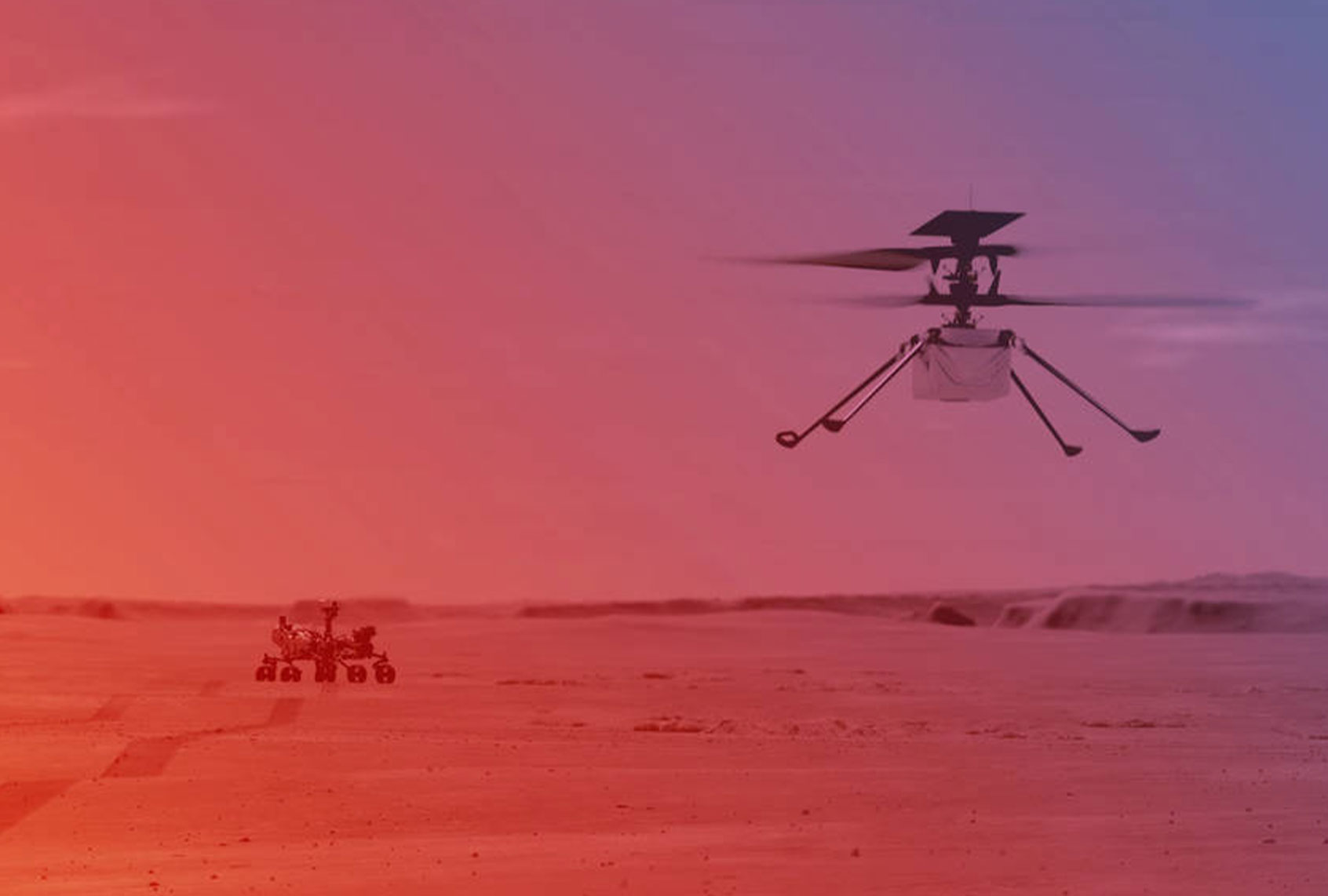Many parents know the anxious feeling of seeing their child grow up and move out of their house for the first time. The same goes for a rotorcraft on Mars.
On Monday, the National Aeronautics and Space Administration (NASA) confirmed that Ingenuity, the four-pound rotorcraft attached to Perseverance, survived its first harrowing night on Mars alone, untethered from the rover that carried it all this way.
“Safe & sound on the surface of Mars,” NASA’s Jet Propulsion Laboratory (JPL) tweeted on April 4, referring to Ingenuity’s detachment from Perseverance.
Ingenuity was previously attached to the belly of Perseverance which provided it shelter and power. Now, it’s operating on its own.
“This is the first time that Ingenuity has been on its own on the surface of Mars,” said MiMi Aung, Ingenuity project manager at NASA’s Jet Propulsion Laboratory in Southern California, in a statement. “But we now have confirmation that we have the right insulation, the right heaters, and enough energy in its battery to survive the cold night, which is a big win for the team.”
Want more health and science stories in your inbox? Subscribe to Salon’s weekly newsletter The Vulgar Scientist.
Surviving a night at Jezero Crater, where Perseverance landed on February 18, is no easy task.
Temperatures at night can dip as low as negative 130 degrees Fahrenheit (minus 90 degrees Celsius). Such temperatures could possibly freeze and crack unprotected electrical components. Fortunately, Ingenuity is solar-powered and relies on a rechargeable battery to keep its systems warm during the night. However, solar power is not as easy to come by on the Red Planet as it is on Earth; Mars receives half the amount of solar energy that reaches Earth. When Ingenuity was attached to Perseverance, it fed off the rover’s nuclear-powered radioisotope thermal electric generator to stay warm.
As Salon has previously reported, mission control considered Ingenuity’s surviving its first night alone a huge milestone on the way to reaching its final goal of flying through the thin Martian atmosphere. Ingenuity is quite small because it must be lightweight to fly through the atmosphere, but it also must have enough energy to retain power during frigid Martian nights. Now, Ingenuity has another big hurdle to overcome still: charging autonomously using its solar panel.
“Our 30-sol test schedule is frontloaded with exciting milestones,” said Teddy Tzanetos, deputy operations lead for the Ingenuity Mars Helicopter at JPL, said in a media statement. A sol is the term for one Martian day, which is equal to about 24.6 hours on Earth. “Whatever the future holds, we will acquire all the flight data we can within that timeframe.”
For the next couple of days, Ingenuity will gather data on how its thermal control and power systems are working now that it’s on its own. This information is critical to its survival for the next 30 sols.
The first flight test for Ingenuity will happen no earlier than April 11, NASA recently stated. Previously, the space agency was targeting anytime after April 8.
Ingenuity’s flight plan is to receive flight instructions, via mission controllers here on Earth, from Perseverance. Then, Ingenuity will proceed to run its rotors to 2,537 revolutions per minute, and lift off. If all goes well, it will ascend about three feet per second and hover at 10 feet for 30 seconds before it descends and touches the ground on Mars. After a couple of test flights, the real mission will begin.
“Mars is hard,” Aung said in a previous statement. “Our plan is to work whatever the Red Planet throws at us the very same way we handled every challenge we’ve faced over the past six years – together, with tenacity and a lot of hard work, and a little Ingenuity.”
If it succeeds at flying, it will be the first powered-controlled flight on another planet.


